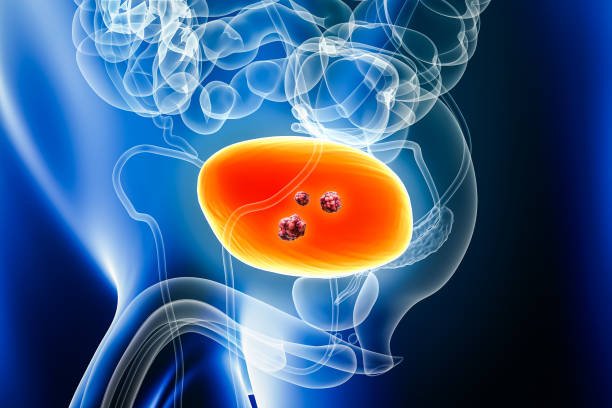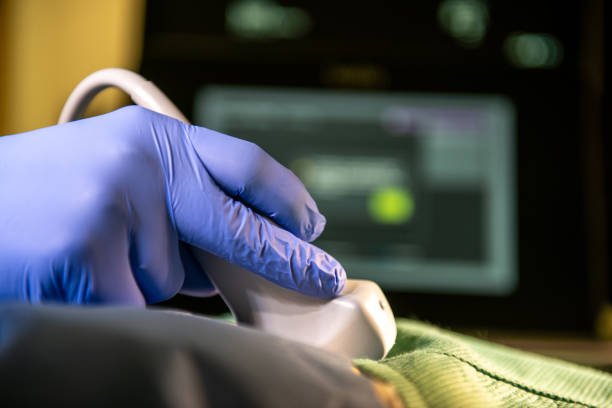
Bladder Cancer
The bladder is located in the pelvic cavity and is like an expandable sac-like balloon that stores urine. If the cells in the bladder develop malignant cancer, it is called bladder cancer. Usually, the cancer cells grow rapidly and uncontrollably, and sometimes invade other organs and tissues.
Early bladder cancer lesions most often start from the epithelial cells in the inner wall of the bladder, and most bladder cancers are diagnosed at an early stage and have good treatment effects. However, there is a possibility of recurrence of bladder cancer, so recovered patients usually need to undergo follow-up visits for several years. Bladder cancer is currently divided into three main types:
- Transitional cell carcinoma :
Also known as urothelial cell carcinoma. It is the most common type of bladder cancer and develops canceration from bladder epithelial cells. - Squamous cell carcinoma:
Squamous cell carcinoma is uncommon and develops from the thin, flat squamous cells in the bladder after long-term infection or irritation of the bladder. - Adenocarcinoma:
Adenocarcinoma is a rare cancer. It is caused by long-term inflammation and stimulation of the bladder, causing the glandular cells in the bladder (the glands responsible for human mucus secretion) to become cancerous.

How common is bladder cancer?
Bladder cancer patients are distributed in all age groups, but are most common in the elderly. However, as long as you can reduce your risk factors, you can reduce your chances of developing bladder cancer. Please discuss this with your doctor for further information.
Bladder cancer symptoms
The typical symptom of bladder cancer is hematuria, especially painless hematuria. Patients with bladder cancer may experience symptoms such as physical decline, weight loss, and bone pain. The occurrence of these symptoms may indicate metastasis of cancer cells and the condition is becoming more serious. Other symptoms to watch for include:
- Hematuria
- Painful urination
- Frequent urination
- Urgency to urinate
- Urinary incontinence
- Abdominal pain
- lower back pain
When should you seek medical advice?
Early diagnosis and early treatment can prevent the condition from getting worse and prevent emergencies from occurring. Therefore, if you notice any abnormalities or the above-mentioned symptoms, please contact your doctor as soon as possible. Physical conditions, symptoms and treatments vary from person to person, so it is best to discuss with your doctor to choose the most suitable option.
Causes of bladder cancer
The exact cause of bladder cancer is still unknown.
Bladder cancer risk factors
The following are risk factors that increase your chance of developing bladder cancer:
- Smoking:
Smoking cigarettes, cigars, or pipes causes harmful chemicals in the body that collect in the urine, increasing the risk of bladder cancer. - Age:
Older adults are at increased risk of bladder cancer, and although it can occur at any age, it is less common in people under 40. - Race:
Caucasians develop bladder cancer at higher rates than other races. - Gender:
Men are more affected than women. - Exposure to cancer-causing chemicals:
The kidneys filter harmful chemicals from the human blood, allowing them to enter the bladder and be excreted in the urine. Therefore, frequent exposure to chemicals may increase the risk of bladder cancer. - Long-term use of diabetes medications:
People who take diabetes medications containing pioglitazone for more than a year are at increased risk of developing bladder cancer. - Chronic bladder inflammation:
Long-term or repeated use of urinary catheters may cause chronic or recurrent urinary tract infections, inflammation, and cystitis (Cystitis), and increase the risk of squamous cell bladder cancer. - Have a personal or family history of cancer:
People who have had bladder cancer are at risk of developing it again; if you have one or more immediate family members who have had bladder cancer, your risk is also increased, but more than one person in your family has had bladder cancer. Cancer is uncommon.
Diagnosis, treatment and staging of bladder cancer
The information provided in this article is not a substitute for any medical advice, please consult a physician for more information.
How to diagnose bladder cancer
Physicians can use one or a combination of several diagnostic methods:
- Routine urine examination: fresh urine cytology examination, mainly detecting cells, cell fragments, crystals, or other substances present in urine
- Internal examination: Use abdominal palpation or use a gloved finger inserted into the vagina or rectum to directly palpate the mass.
- Cystoscopy: The doctor will use a cystoscope to enter the urethra and remove a small piece of tissue from the bladder as a pathological examination sample to detect bladder cancer and the possible location of the tumor. A cystoscope is a flexible, elastic thin tube with a light source lens at the front end.
- Biopsy of the affected area: Use a microscope to observe the tissue slices taken from the patient to determine whether they are cancer cells, the type and stage of the cancer cells, and whether they have spread to other parts.
- Lower abdominal scan: A scan of the bladder or abdomen using computed tomography or ultrasound.
- Intravenous pyelography: can be used for differential diagnosis, with the purpose of detecting abnormalities in the bladder and whether there are epithelial tumors associated with the upper urinary tract.
- X-ray examination.

Bladder cancer staging
Bladder cancer is divided into stages 0 to 4 based on how far the cancer cells have spread:
Stage 0: Carcinoma in situ, the cancer cells have not yet invaded the mucosal layer of the bladder lining.
Stage 1: Superficial type, which invades the mucosal layer of the inner wall of the bladder but has not yet reached the muscle layer of the bladder.
Stage 2: Cancer cells have invaded the bladder muscle layer.
Stage 3: Cancer cells may have spread to the organs and tissues surrounding the bladder.
Stage 4: Cancer cells have spread to the abdominal cavity, adjacent organs and lymph nodes, and even distant bones, lungs and other organs.
Bladder cancer treatment methods
The doctor will recommend an appropriate treatment plan based on the severity of bladder cancer:
Stage 0 and Stage 1 Treatment
Treatment may include surgical removal of the tumor, chemotherapy, or immunotherapy (stimulating the body’s immune system to attack cancer cells).
Stage 2 and Stage 3 Treatment
- Surgery to remove part of the bladder, transurethral resection, or electrocautery of the bladder tumor, followed by chemotherapy. Surgery may also be performed to remove the entire bladder, radical removal of the bladder, and urinary diversion surgery.
- Chemotherapy, radiotherapy or immunotherapy can shrink tumors before surgery or as a treatment option when surgery is inoperable. They can also kill remaining cancer cells after surgery and prevent cancer from coming back.
Stage 4 treatment
- Chemotherapy is given; mainly to relieve symptoms and hopefully prolong life.
- Radical cystectomy with removal of adjacent lymph nodes, plus urinary diversion surgery. And combined with chemotherapy, radiotherapy or immunotherapy after surgery to kill remaining cancer cells, relieve symptoms or prolong life
- Receive treatment with clinical trial drugs.

Daily life precautions or home remedies for bladder cancer
The following ways can help you avoid the threat of bladder cancer:
- Do not smoke
- Avoid secondhand smoke
- Avoid exposure to cancer-causing chemicals
- Drink more waterNot holding in urine












